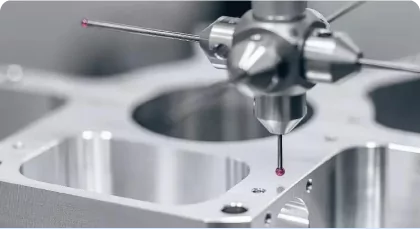How to Calculate Injection Molding Cycle Time: A Comprehensive Guide to Efficiency
How to Calculate Injection Molding Cycle Time: A Comprehensive Guide to Efficiency
Injection molding is one of the most widely used manufacturing processes for plastic parts. Understanding how to calculate the injection molding cycle time is crucial for optimizing production, ensuring high-quality products, and reducing costs. In this guide, we’ll break down the cycle time calculation, and explain why each phase—especially cooling time and holding pressure time—is important for overall efficiency.
What is Injection Molding Cycle Time?
The cycle time in injection molding refers to the time it takes for the injection molding machine to complete one cycle of injection, cooling, and ejection of a part. Optimizing cycle time can drastically improve production rates and minimize material waste, helping you save time and costs.
Why Is Calculating Injection Molding Cycle Time Important?
1. Improves Production Efficiency
Shorter cycle times mean you can produce more parts in less time, leading to higher output and lower costs per part.
2. Enhances Product Quality
Optimizing cycle time ensures that each part is accurately molded with consistent dimensions, reducing defects such as warping or incomplete filling.
3. Reduces Energy Consumption
By reducing machine running time, you can lower energy consumption and minimize wear and tear on equipment, extending the lifespan of your machinery.
How to Calculate Injection Molding Cycle Time
The total injection molding cycle time consists of four primary phases:
· Injection Time (The time it takes to inject molten plastic into the mold)
· Holding Pressure Time (Packing Time) (The time spent holding pressure to compensate for shrinkage)
· Cooling Time (The time it takes for the material to cool and solidify)
· Ejection Time (The time required to eject the part from the mold)
Hot to Calculate the Cooling Time
Cooling time is typically the longest phase of the cycle, and it’s the time it takes for the injected plastic to cool enough to solidify. Cooling time depends on factors such as:
· Part thickness: Thicker parts take longer to cool.
· Material properties: Materials with high thermal conductivity cool faster.
· Mold temperature: The temperature of the mold also affects cooling speed.
The Formula for Calculating Cooling Time is as Follows:

Where:
· Tmax = Initial temperature of the melt
· Tmin = Desired mold temperature
· Thickness = The thickest part of the molded part (in millimeters)
· K = A constant related to the material's thermal conductivity
For example, thicker parts will require longer cooling times, while high-conductivity materials like aluminum cool faster.
Holding Pressure Time (Packing Time): Filling the Gaps
Holding pressure (or packing time) compensates for material shrinkage as it cools. It ensures that the mold cavity remains fully filled to avoid defects like sink marks.
Formula for Holding Pressure Time:

Where:
· Volume of the Cavity is the volume of the mold cavity in cubic centimeters (cm³).
· Injection Rate is the rate at which the material is injected, typically measured in cm³ per second.
· Packing Time Factor is a constant based on the material used and mold design.
Generally, holding pressure time is shorter than cooling time but still plays a significant role in cycle optimization. Too long a packing time can lead to excess pressure and stress on the mold, while too short a time can result in dimensional defects.
Practical Example: How to Calculate Cycle Time for a Single Part
Let’s calculate the cycle time for a polypropylene (PP) part with the following parameters:
· Material: PP (Polypropylene)
· Part thickness: 5mm
· Injection Rate: 100 cm³/s
· Mold Temperature: 80°C
· Part Weight: 50 grams
Steps:
1. Injection Time: Based on material and mold geometry.
2. Cooling Time: Use the cooling formula based on material properties and part thickness.
3. Holding Pressure Time: Based on cavity volume and injection rate.
4. Ejection Time: 2–3 seconds, depending on part complexity.
Total Cycle Time Formula
The total cycle time can be calculated as:
Cycle Time=Injection Time+Holding Pressure Time+Cooling Time+Ejection Time
Optimizing each phase will help reduce the overall cycle time, leading to faster production and cost savings.
Key Tips for Optimizing Injection Molding Cycle Time
· Optimize Cooling Time: Ensure uniform mold temperature and use high-conductivity materials to speed up cooling.
· Reduce Injection Time: Adjust the injection rate to balance speed and material flow.
· Fine-tune Holding Pressure: Control packing time to avoid over-pressurizing the mold and causing defects.
· Improve Mold Design: Minimize flow length and optimize water channels for better cooling efficiency.
Final Thoughts: Why Cycle Time Calculation Matters
Accurate calculation and optimization of injection molding cycle time is essential for improving production efficiency, product quality, and reducing energy consumption. By understanding the key phases—cooling time, holding pressure time, and injection time—you can make adjustments to minimize waste, increase throughput, and maintain high-quality standards.
Need help calculating your cycle time or optimizing your injection molding process? Contact our team for expert assistance!








